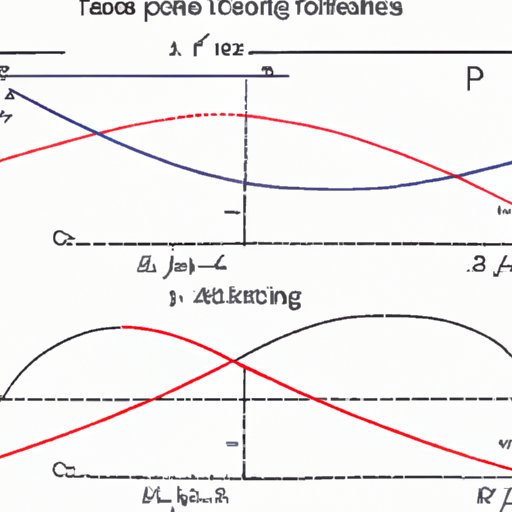
Introduction
Calculus is a branch of mathematics which deals with the study of change. It involves differential and integral calculus which are powerful mathematical tools used in many fields of science and engineering. One of the most fundamental concepts in calculus is the tangent line, which is used to approximate the behavior of a curve at a single point. In this article, we will dive deep into the world of tangent lines, how to find them, and why they matter.
The Ultimate Guide to Tangent Lines: How to Find Them and Why They Matter
A tangent line is a straight line that touches a curve at a single point. In calculus, it is important to be able to find the tangent line to a curve at a specific point because it allows us to approximate the behavior of the curve in the vicinity of that point. This is useful in many real-life scenarios, such as optimizing production schedules, predicting the trajectory of a projectile, or understanding the behavior of biological systems.
Mastering Tangent Lines in Calculus: Tips and Tricks for Finding Them
To find a tangent line to a curve, we need to first understand the derivative of the curve. The derivative is a mathematical tool that measures how much a function changes at a given point. It is also the slope of the tangent line at that point. There are many techniques for finding the derivative of a function, such as using the limit definition of a derivative or using the power rule for derivatives.
Once we have found the derivative of a function, we can use it to find the equation of the tangent line at a single point. We do this by evaluating the derivative at the point and plugging it into the equation of slope-intercept form. The result is the equation of the tangent line.
Step-by-Step Instructions for Finding Tangent Lines to Functions
To find the equation of the tangent line to a function at a specific point, follow these steps:
- Find the derivative of the function
- Evaluate the derivative at the point of interest to find the slope of the tangent line
- Use the point-slope form of the equation of a line to find the equation of the tangent line
For example, let’s find the equation of the tangent line to f(x) = x^2 at the point (1,1). First, we find the derivative of the function, which is f'(x) = 2x. Next, we evaluate the derivative at x=1 to get the slope of the tangent line, which is m=2. Using the point-slope form of the equation of a line, we can find the equation of the tangent line to be y-1 = 2(x-1), or y=2x-1.
The Importance and Applications of Tangent Lines: A How-To Guide
The importance of tangent lines lies in their ability to approximate the behavior of a curve at a single point. In many real-world scenarios, this is crucial for making accurate predictions or optimizing systems. For example, in engineering, finding the tangent line to a curve can help us optimize the design of a structure or machine. In physics, tangent lines are used to predict the trajectory of a projectile or to understand the behavior of a moving object.
Tangent lines are also related to other fundamental calculus concepts, such as limits, derivatives, and integrals. Understanding tangent lines is a crucial step towards mastering these more advanced concepts and their applications in science and engineering.
Solve for the Slope: How to Find the Tangent Line to a Curve
Another method for finding the tangent line involves using point-slope form or implicit differentiation. Point-slope form involves finding the equation of the line passing through two points on the curve, one of which is the point of interest. Implicit differentiation involves taking the derivative of both sides of an implicit equation with respect to x and solving for the derivative.
For example, let’s find the equation of the tangent line to the curve x^2+2xy-y^3=0 at the point (1,1). Using implicit differentiation, we take the derivative of both sides with respect to x to get 2x+2y+2xy’-3y^2y’=0. Solving for y’, we get y’ = (3y^2-2x)/(2y+2x). Evaluating this at the point (1,1), we get y’ = 1. Plugging this into point-slope form with the point (1,1), we get the equation of the tangent line to be y – 1 = 1(x-1), or y=x.
Conclusion
Tangent lines are a fundamental concept in calculus that play a crucial role in many fields of science and engineering. By understanding how to find a tangent line and why it matters, we can better understand the behavior of curves and optimize systems in the real world. We hope this guide has provided you with the insights and techniques needed to master the art of finding tangent lines.




